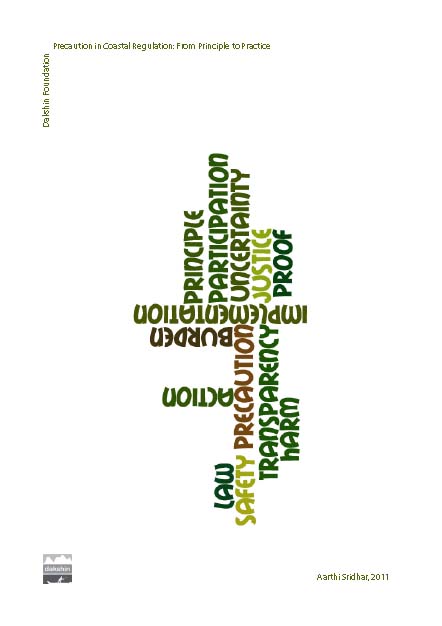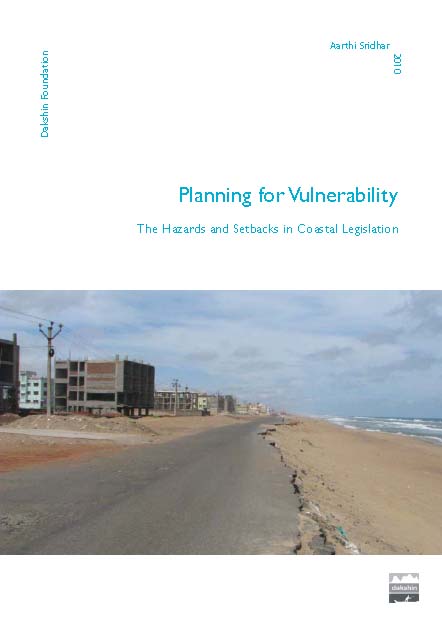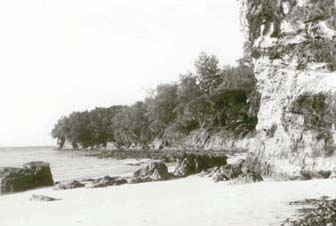/topics/oceans-and-coasts
Oceans and Coasts
Taking steps toward marine and coastal ecosystem based management: An introductory guide by UNEP
Posted on 25 Jun, 2011 09:28 AMAn important aim of this guide is to facilitate the implementation of UNEP’s overarching Ecosystem Management Programme and new Marine and Coastal Strategy in countries and regions in line with its Medium Term Strategy 2010-13.
Precaution in coastal regulation - From principle to practice – A report by Dakshin Foundation
Posted on 21 Jun, 2011 11:45 AM The decision to act or not act, and further how to act in the face of unknowns or uncertainties is the subject matter of the precautionary principle (PP). It is against this historical backdrop of unknowns in environmental governance that the present study on the precautionary principle was conducted.
The decision to act or not act, and further how to act in the face of unknowns or uncertainties is the subject matter of the precautionary principle (PP). It is against this historical backdrop of unknowns in environmental governance that the present study on the precautionary principle was conducted.
The present framework for environmental governance provides a number of areas where precaution can and must be applied. In addition to these areas, the present report is the outcome of a descriptive study that shows the extent to which key elements of the precautionary principle are embedded in the specific case of two environmental laws related to coasts. The study examines key areas of the clearance continuum (law-making, clearance and monitoring) through a single broad question: To what extent is the approach of precaution embedded in decision-making under the CRZ Notification 1991 and the Water Act, 1974?
Sridhar attempted to examine this question on a continuum that examines a) the text of the law, b) the conditions under which projects are cleared or rejected and c) issues related to the monitoring of these conditions. The Asia and Pacific Workshop Report of the Precautionary Principle Project declared that there are both explicit and implicit uses of the precautionary principle. It states that there are some instances where the PP’s application is explicit and unambiguous whereas in other decisions the PP is implicit. They also raise an important point that to actually determine whether a decision was indeed precautionary or not (where it is not explicit) requires an examination of the context and motivations for decisions and management interventions.
Sagar - A pocketbook on oceans with special reference to waters around India
Posted on 13 Jun, 2011 03:12 PMThe pocket book provides an overview of the oceans,their formation, characteristics, and the dynamics that determine their evolution. It also contains information on how the interested reader can pursue these topics further through books and websites.
The pocket book is divided into the following chapters:
Planning for vulnerability - The hazards and setbacks in coastal legislation – A report by Dakshin Foundation
Posted on 22 May, 2011 06:16 PM The law pertaining to coastal spaces – the Coastal Regulation Zone (CRZ) Notification, 1991 specifically decides what people can and cannot do on the coastal stretches of the country.
The law pertaining to coastal spaces – the Coastal Regulation Zone (CRZ) Notification, 1991 specifically decides what people can and cannot do on the coastal stretches of the country.
Harbouring trouble - The social and environmental upshot of port growth in India – A report by Dakshin Foundation
Posted on 22 May, 2011 12:04 PMBesides its own impact, port development is often accompanied by other activities such as the location of industries, power plants, railway lines, highways, hotels, SEZs, residential complexes, etc., that have multiple detrimental impacts – environmental, social and erosion related.
Dakshin Foundation is looking for Programme Officer- Coastal Networks and Environmental Governance, at Bangalore
Posted on 11 May, 2011 10:53 AM Dakshin Foundation is a non-profit, non-governmental organisation based at Bangalore, with a mission to inform and advocate conservation and natural resource management, while promoting and supporting sustainable livelihoods, social development and environmental justice.
Dakshin Foundation is a non-profit, non-governmental organisation based at Bangalore, with a mission to inform and advocate conservation and natural resource management, while promoting and supporting sustainable livelihoods, social development and environmental justice.
The Coastal and Marine Programme (CMP) at Dakshin works towards supporting coastal networks of community organisations, fishworker unions and associations and civil society groups interested in conservation and development issues in coastal India.
Conference in Hindi on “The impact of changing lifestyle and industrialization on land and marine environment”, National Institute of Oceanography, 6th - 7th June 2011, Goa
Posted on 09 May, 2011 09:23 AMOrganizer: National Institute of Oceanography
Venue: National Institute of Oceanography, Goa
Description:
National Institute of Oceanography (NIO) is organizing this two day conference in Hindi. The idea is to encourage the scientific community as well as the youth to develop an ingenious and inventive outlook towards environmental issues.
Impact of the 2004 tsunami on the geology of Car Nicobar Island – A paper in Current Science
Posted on 25 Apr, 2011 07:17 PM The historic tsunami of 2004 in the northern Indian Ocean severely affected the eastern coastal areas of peninsular India and Andaman-Nicobar Islands.
The historic tsunami of 2004 in the northern Indian Ocean severely affected the eastern coastal areas of peninsular India and Andaman-Nicobar Islands.
Global equatorial sea-surface temperatures over the last 150,000 years: An update from foraminiferal elemental analysis – A paper in Current Science
Posted on 25 Apr, 2011 10:21 AMSolar insolation changes are amongst various factors that affect sea-surface temperature, which in turn modulate global climate. Out of all the oceanic regions, equatorial region receives the maximum solar insolation and thus is the locale for the warmest waters. However, how the equatorial sea-surface temperature affects global climate, is still not clear.
Applications invited for Ph.D. programme (Fall-2011 session) – National Institute of Oceanography – Apply by 20th May, 2011
Posted on 22 Apr, 2011 06:48 PMThe National Institute of Oceanography (NIO) with its headquarters at Dona Paula, Goa and regional centres at Kochi, Mumbai and Visakhapatnam, is one of the 38 constituent laboratories of the Council of Scientific & Industrial Research (CSIR), New Delhi. The institute has grown today into a large oceanographic laboratory of international repute. The focus of research has been on observing and understanding the special oceanographic features that the North Indian basin offers. The inferences from this research have been reported in about 5,000 research articles so far.





